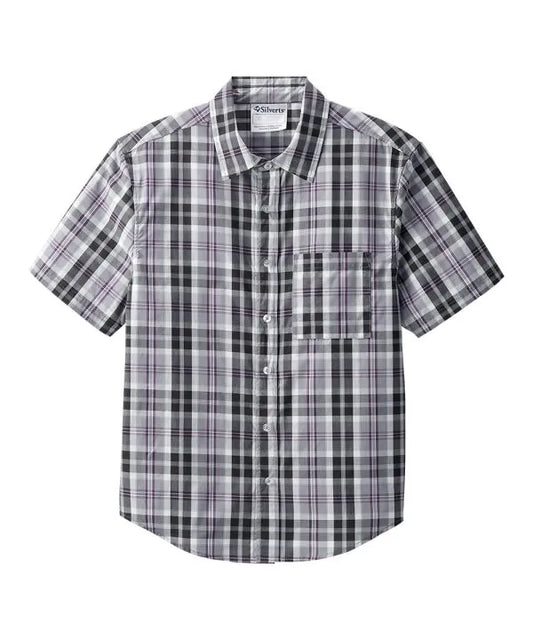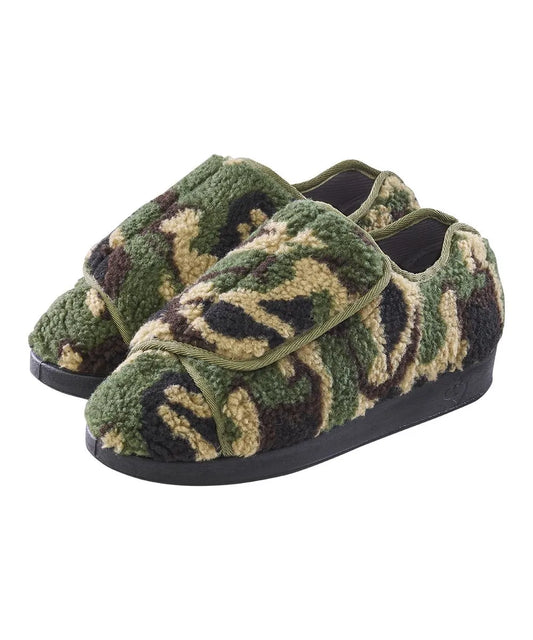By: Qasem Gilani
Getting dressed is something that we do every day, but for people who have limited use of one hand, every button, zipper, and sleeve can become a challenge. Whether caused by a stroke, an injury, or a condition such as hemiplegia, one-handed dressing can feel overwhelming at first. Yet with the right clothing, tools, and techniques, this daily routine can transform into a moment of independence and self-confidence.
Adaptive fashion has changed how people experience dressing. Rather than forcing someone to adapt to clothing that was never designed for them, these garments adapt to the individual. From magnetic shirts that close with one hand to side-zip pants that eliminate awkward twisting, the world of adaptive apparel now makes it possible to look polished and feel comfortable while getting dressed independently.
This guide explores what to look for in clothing designed for single-hand dressing, highlights specific items from June Adaptive, and shares practical advice for building a wardrobe that supports both function and style.
Understanding the Challenge of One-Hand Dressing
People living with hemiplegia or limited mobility often face several obstacles when dressing. Fastenings such as small buttons, zippers, or clasps can require fine motor skills that are difficult to perform using one hand. Pulling clothing over the head or stepping into pants can require balance or dexterity that may no longer come easily.
The goal of adaptive clothing is to remove these barriers and create options that support independence. By rethinking traditional designs, June Adaptive makes dressing faster, safer, and less frustrating. Magnetic closures replace buttons, side openings allow garments to be slipped on from a seated position, and elastic waistbands remove the need for both hands to fasten clothing securely.
While adaptive fashion has medical roots, it is also about self-expression. People should feel stylish, dignified, and confident, no matter their physical circumstances. Choosing adaptive clothing is not simply about practicality; it is about reclaiming a sense of identity through what you wear.
Choosing Tops That Promote Independence
For individuals who dress with one hand, shirts and jackets are often the biggest challenge. Buttons, zippers, and overhead garments can be exhausting to manage without help. Adaptive tops solve this by incorporating closures that can be opened and closed easily using a single hand.
Magnetic Closures for Effortless Dressing
Magnetic fastenings are among the most innovative solutions for one-handed dressing. They connect automatically when the two sides of a garment come close together, creating a seamless closure that looks just like regular buttons.
The Men’s Denim Jacket with Magnetic Closures from June Adaptive is a standout example. It maintains the stylish, classic appearance of a denim jacket while allowing the wearer to open or close it with minimal effort. The magnets are hidden beneath the fabric, preserving the look of real buttons while making dressing simpler and faster.
For a lightweight option, the Women’s Magnetic Zipper Active Jacket provides warmth and flexibility without the struggle of aligning zippers. The magnets guide the zipper into place automatically, allowing it to glide up easily with one hand. It is ideal for both indoor and outdoor use, especially during physical therapy sessions or casual outings.
Adaptive Shirts That Combine Style and Function
June Adaptive also offers a Women’s Shirt with Magnetic Buttons that looks just like a classic blouse but is designed for people with limited dexterity. It provides the satisfaction of dressing independently while maintaining a crisp, professional appearance.

Magnetic shirts are particularly valuable for those returning to work or social activities after rehabilitation. They offer a sense of normalcy and confidence that is often missing after major life changes.
When selecting tops for one-handed dressing, consider fabrics that are soft, breathable, and easy to move in. Avoid stiff collars or tight cuffs that can be difficult to adjust. Lightweight cotton blends, jersey knits, or moisture-wicking materials provide comfort and stretch while remaining easy to handle.
Pants Designed for Easy Dressing
Putting on pants with one hand can be even more difficult than managing tops, especially when dealing with zippers, buttons, or narrow openings. Adaptive pants are designed to address these challenges with features that simplify dressing from either a standing or seated position.
Side Zippers and Wide Openings
Side-zip pants allow the garment to open widely so you can slide in your legs without balancing or bending awkwardly. The Unisex Recovery Pants with Side Zippers from June Adaptive are a perfect example. They open along the sides and feature large zippers that can be managed easily with one hand. These pants provide comfort for people who are seated for long periods or are recovering from surgery.

Another excellent option is the Men’s Seated Stretch Cargo Pants with Elastic Waistband. Designed for those who use wheelchairs or have limited hand function, they eliminate the need for fasteners. The stretchy waistband provides security and flexibility, ensuring a comfortable fit throughout the day.
For women who prefer a softer look, the Women’s Soft Knit Pants with Easy Touch Closures combine elegance with practicality. The side-tab Velcro closures make dressing possible with one hand, and the knit fabric moves easily without wrinkling or clinging.
Fit and Fabric Considerations
When choosing adaptive pants, focus on both comfort and mobility. Look for fabrics with slight stretch that maintain their shape while allowing movement. Materials such as spandex-cotton blends or stretch denim offer durability without feeling stiff.
Also, pay attention to how the waistband sits when you are seated. A higher back rise and lower front can prevent the pants from sliding down, which is important for people who spend much of their day sitting. Flat seams and smooth linings reduce friction, protecting the skin from irritation during long wear.
Adaptive Undergarments That Simplify Dressing
Even the smallest items in your wardrobe can make a significant difference in independence and comfort. Adaptive undergarments are designed to be easy to put on and remove without requiring twisting or reaching behind the back.
The Front-Closure Adaptive Bra from June Adaptive allows for one-handed dressing while providing gentle support and soft materials that are comfortable against the skin. The front placement of the closure eliminates the need for overhead arm movements, which can be painful or impossible for some users.
For men, Adaptive Underwear with Easy Side Access offers discreet openings that make self-dressing and hygiene easier. The adaptive design ensures comfort without compromising modesty or style.
Undergarments might seem like small details, but they are foundational to comfort throughout the day. Choosing accessible designs can reduce frustration and make the dressing routine feel smoother from start to finish.
Footwear That Completes the Outfit
Shoes are often overlooked in conversations about adaptive fashion, but they are crucial for maintaining independence and safety. People with limited hand mobility need footwear that can be put on without laces or complex fastenings.
The Unisex Supportive Memory Foam Shoes with Front Zipper Access Voyage are an excellent choice for anyone who struggles with traditional shoes. The front zipper allows the shoe to open widely so the foot can slide in easily. Once zipped, the fit feels secure and comfortable thanks to the memory foam insole that moulds to your foot’s shape.
Another great option is the Women’s Wide Easy Slip-On Sneakers Without Laces. These shoes combine modern style with practical comfort. The slip-on design removes the need for bending or tying, while the non-slip sole ensures stability during transfers or movement.
For people who spend extended periods sitting, lightweight shoes with breathable materials are best. Look for soft linings, flexible soles, and easy-on openings. These features make dressing simpler while protecting your feet from pressure or friction.
Helpful Dressing Aids for Greater Independence
In addition to adaptive clothing, a few simple tools can make a big difference in the ability to dress independently. Many of these aids are recommended by occupational therapists and can be used alongside adaptive garments for even greater ease.
- Button Hook: Helps fasten buttons by looping through and pulling them into place.
- Zipper Pull Ring: Attaches to zipper tabs for a better grip and longer reach.
- Sock Aid: Holds a sock open so you can slide your foot in without bending.
- Dressing Stick: Extends reach to help with pulling on sleeves or pant legs.
- Long-Handled Shoehorn: Assists in slipping into shoes without leaning forward.
These tools may seem simple, but they can turn dressing from a stressful task into a moment of regained control. Combining adaptive fashion with assistive tools supports both autonomy and confidence in daily routines.
Practical Tips for One-Hand Dressing
Adopting new techniques can make getting dressed even easier. Consider these strategies recommended by occupational therapists:
- Lay out clothing in the correct order. Start with garments that are easiest to put on and work your way outward, such as underwear, shirt, and then pants.
- Dress the affected side first. Slide the weaker arm or leg into the garment before the stronger one. This helps you guide clothing more easily without strain.
- Sit on a stable surface. Dressing while seated reduces the risk of falling and allows better control.
- Use your lap as a workspace. Rest garments across your knees to prevent them from slipping to the floor.
- Practice mindfulness during dressing. Many people find dressing to be part of rehabilitation. Each small success builds coordination and confidence over time.
These small adjustments can create a smoother, safer dressing experience every day.
Reclaiming Confidence Through Fashion
Adaptive clothing does more than make daily tasks manageable. It restores a sense of confidence and normalcy that can fade after a major health event or injury. Choosing garments that reflect your personal style sends a message: independence and fashion can coexist.
June Adaptive’s collection was designed with this philosophy in mind. Every magnetic button, side zipper, and elastic waistband is the result of thoughtful design centred on real people’s needs. The result is clothing that feels empowering to wear and easy to use.
People who dress with one hand no longer need to choose between practicality and personal expression. Adaptive fashion allows you to look the way you want while supporting the way you live.
Dressing with one hand may present unique challenges, but it does not mean giving up independence or style. Adaptive clothing provides solutions that make everyday life easier while preserving dignity and individuality. Magnetic shirts, side-zip pants, slip-on shoes, and accessible undergarments open the door to a more comfortable and confident daily routine.
If you or someone you love is navigating one-handed dressing after a stroke, injury, or mobility change, explore June Adaptive’s carefully curated collection. Every piece is designed to help you feel more comfortable, capable, and confident in your own clothes.
Visit JuneAdaptive.com to discover adaptive apparel that supports independence, and sign up for the June Adaptive newsletter to receive new style guides, community stories, and updates on the latest innovations in adaptive fashion.















